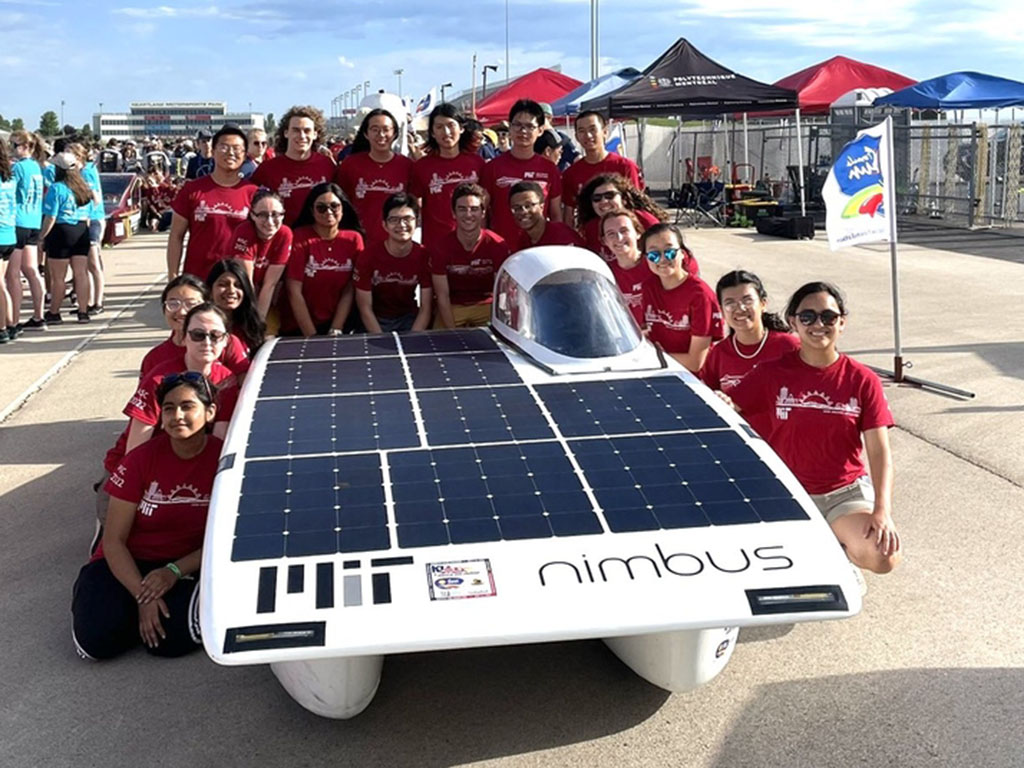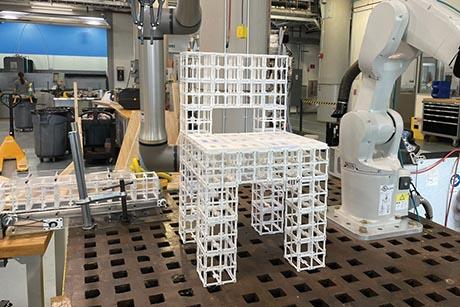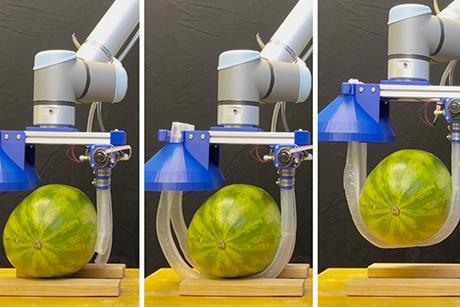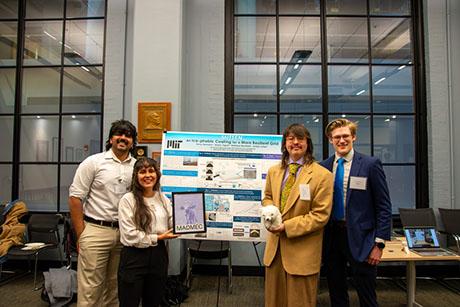MIT’s solar car team wins 2022 American Solar Challenge for the second year in a row
Many feel a lift when the sun comes out, but most won’t break out in song and dance — unless, of course, they’re on MIT’s Solar Electric Vehicle Team.
The team relied on 100 percent solar energy to power their hand-built car, Nimbus, for 1,940 miles, taking first place at the American Solar Challenge for the second year in a row in the Single Occupant Vehicle category.
“We were a little nervous about how this race was going to go because last year was quite difficult,” SEVT captain and MIT senior Cameron Kokesh shares. “This year we planned more decisions ahead of time and it was much more enjoyable.”
To qualify for The American Solar Challenge, teams go through a rigorous week of challenges called “scrutineering” and the Formula Sun Grand Prix, a three-day track race. These events ensure that teams can safely complete the eight-day trek from Independence, Missouri to Twin Falls, Idaho. No longer enjoying the predictability of the track, teams must deal with changes in elevation, road conditions, and driving laws.
In typical MIT fashion, the SEVT strategy team designed software to measure these variables and determine the best speed to travel. “The most recent iteration took all of last year to develop,” strategy lead MIT junior Stephen Campbell says. “Our philosophy with the new version was to develop tools to assist the people making strategic calls. This proved to be quite flexible during the race, allowing us to adapt our target speeds based on our distance goals and the changing weather conditions.” The strategy team drove alongside Nimbus in a chase vehicle, calling out target speeds every time the software downloaded new data.
The strategy team made every decision in secret, because if other teams overheard their plans, they could adjust their own plans to get ahead.
“They wouldn’t even tell me how much charge their battery had,” says Patrick McAtamney, the Edgerton Center technical instructor and shop manager. “Stephen’s parents were camping out with us, and he wouldn’t tell them either!”
“Maybe we took it a little overboard with the secrecy,” Stephen laughs. “We would flip the box over so other teams couldn’t see the number on it. If you know how much battery the other teams have, you can make decisions based on that.”
Surviving the heat
This year’s race took place during a heat wave, with many 100-degree days. To perform at their best and avoid accidents, the team had to monitor one another’s hydration, sleep, stress level, and temperature.
“On the first night we arrived at the track in Kansas, there was an enormous rush to get the car ready for inspection the next morning, and the electrical team had to stay up and work for the full night,” sophomore Vice Captain Maria Aguiar says. “The next morning, the rest of the team insisted that these people sleep during the busy day to recover, even if they said they could continue working that day.”
“Any time that seemed to be lost resting in air conditioning or sleeping more was certainly outweighed by the clearer minds and efficiency we had during the more intense situations,” Aguiar explains. “No one ever glorified a sleepless night or urged an exhausted teammate to keep working. A member could confide in anyone, and help would come immediately. This level of selflessness from the team was something magical.”
Despite the stress of the heat and the race, the team made sure everyone kept their spirits high and had fun. They enjoyed composing songs and singing them for other teams. They sang a parody of “California Girls” to the University of California at Berkley team, which led to instant friendship. “We became best friends with so many teams,” Aguiar recounts. They also made a solar car theme song and sang it to the race officials.
Here comes the sun
On day six of eight, SEVT camped overnight between the border signs of Wyoming and Idaho after completing an extra loop. Principia College, camped just a few yards away, was in a close second to their first. But with a cloudy forecast, a 4 percent charge on their car battery, and a 7,412-foot climb up South Pass ahead, they feared they might lose it all.
“We were really concerned we wouldn’t be able to make it,” says Campbell. Campbell and the rest of the strategy team anxiously refreshed their weather apps, hoping for some good news.
“We all knew that the end of the race would be determined by the next few actions we took,” says Kokesh.
The next day they were allowed to leave at 9 a.m. “We decided to charge our car until 10:30 and Principia left around 9:15 to try to get some miles ahead. It had been cloudy all night. A few minutes after Principia left, the sun came out. We were able to put our array facing directly into the sun and get the charge we needed to climb the mountain. We were able to make it to the next checkpoint driving at 30-40 mph the entire way there,” Campbell says.
SEVT won with a 73.4-mile lead. They were also recognized with the Battery Pack Award and Sportsmanship Award.



